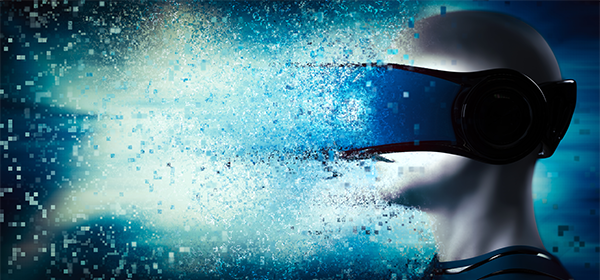This was my first visit to VR World Congress and to be honest I wasn’t sure what to expect. Based at the Harbourside in Bristol it brought together the eclectic mixture of nautical buildings and boats with the next generation in Virtual, Augmented and Mixed Reality.

Virtual Reality (VR) is the complete immersion in the virtual world; Augmented Reality brings additional pieces of information that enhance a real life experience; Mixed Reality is where physical and digital objects co-exist. I remember seeing VR about 10 years ago for the first time and I thought it was cool but struggled to see how I would use it in real life. VR has made huge steps forward in recent years with the increased performance potential offered by mobile devices enabling entry level VR experience be much more compelling and bringing to life other use cases, not only just for gaming.
Wandering round the expo the usual gaming names like Unity were in evidence; large brands like AMD and Microsoft showed their graphics potential with the Radeon product line from AMD and the HoloLens from Microsoft. One thing that struck me is that VR is still very difficult to demo to a wider audience. It is fine for the person immersed in the VR world but people watching still end up looking at a person with a headset on, often looking a bit confused. Not really a spectator sport. Whoever enables “see what they are seeing” will open up the observer’s experience and might encourage more people to put the headset on. The aspect that really caught my eye was the 360 camera technology and the quality of imagery that can now be captured. Also the great ways in which the content can be experienced. Before this event I found a company called Lightform who have taken AR away from the headset and apply the principles to surfaces and project imagery that complement and enhance objects or surfaces so that everyone can enjoy them at the same time. At the expo there was also an igloo which you stepped inside that enabled to you experience the 360 content without a headset.
My favourite presentation was done by Sol Rogers from REWIND who talked through the work they had done on a VR short to support the Ghost in the Shell film. Great use of VR concepts and interaction through recreation of similar scenes to those seen in the film that you could then be part of. Stunning visuals – see the following link to get a taster of what can be achieved for VR built on top of the Unreal games engine. http://rewind.co/portfolio/ghost-shell-virtual-reality-experience/
There was also a good presentation from Google on streaming VR and AR. This enables you to have a real time VR experience as an event is happening. The main challenge is how do you replicate not only the visuals but also the sound – so when you move your head to view things the sound reflects the direction of sound you are looking at. More complex than I thought and one of the main impacts is the amount of data that you need to send to reflect this. So bandwidth then becomes the gating factor. Google have been working on compression techniques such as Draco to enable this data to be compressed to levels that making it feasible again.
My session on Translating Technology included a wide range of people looking to expand the experience on well-known activities such as heritage, museums, advertising, complementary content for music videos… What was exciting was the variety of areas that were looking at expanding their service or experience through a variety of VR mixes. I feel that VR has progressed a lot and the level of innovation has increased in the right direction not only on the content but also how you experience the content. However, people will never get the VR experience if they are reluctant to put on the headset – so we need to find more ways to enable the experience.
